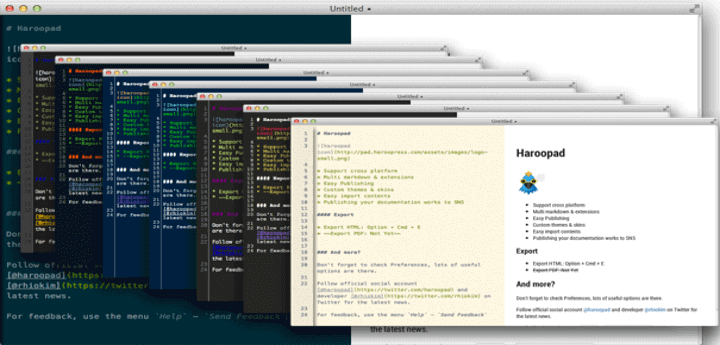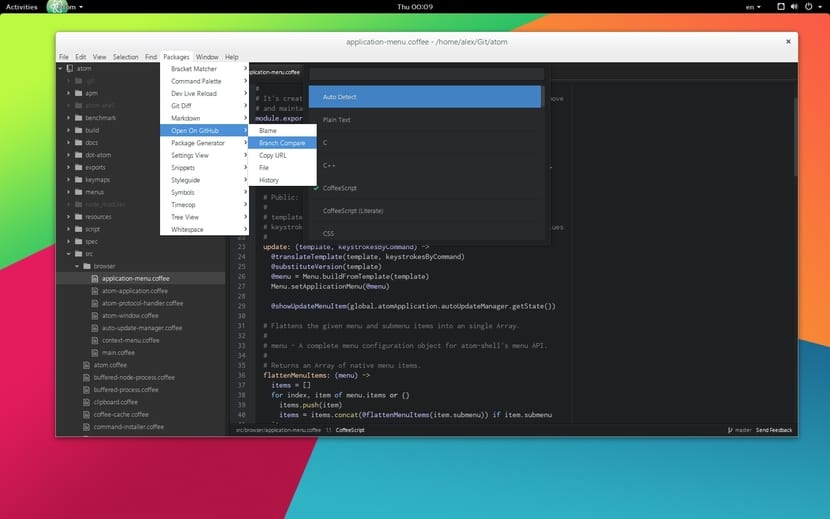


The configuration is grouped into global settings under the * key and language-specific settings under scope named keys like. '*' : 'core' : 'excludeVcsIgnoredPaths' : true 'editor' : 'fontSize' : 18 Global Configuration SettingsĪtom loads configuration settings from the config.cson file in your ~/.atom %USERPROFILE%\.atom directory. It will show you what keys Atom saw you press and what command Atom executed because of that combination. If you run into problems with keybindings, the Keybinding Resolver is a huge help. You can see all the keybindings that are currently configured in your installation of Atom in the Keybindings tab in the Settings View. You can open this file in an editor from the Atom > Keymap File > Keymap Edit > Keymap menu. It will always be loaded last, giving you the chance to override bindings that are defined by Atom's core keymaps or third-party packages. But if the same keystroke occurs inside a select list's mini-editor, it instead triggers the core:confirm command based on the binding in the more-specific selector.īy default, keymap.cson is loaded when Atom is started.

In a normal editor, pressing Enter triggers the editor:newline command, which causes the editor to insert a newline. This keymap defines the meaning of Enter in two different contexts.
Atom json editor download free#
If you face some issues, please feel free to ask in the comment section.īy the way, which method you prefer for installing Atom plugins? The GUI method or the command line one? Do share your preference.'atom-text-editor' : 'enter' : 'editor:newline' 'atom-text-editor input' : 'enter' : 'core:confirm' I hope you find this quick little tutorial helpful in installing packages in Atom editor. You can see them with the help option -h. There are many more arguments the apm command can take for managing the packages (installing, removing, deactivating, upgrading etc). Keep in mind that apm command doesn’t support tab completion by default so you need to know exact package name here. This is why you don’t need to use sudo while installing Atom packages. atom/packages directory in your home directory.
Atom json editor download install#
You can pick the name of the package you want and install it the following way: apm install package_name As you can see in the image below, it also shows how many times a package has been downloaded and how many stars it has to indicate the popularity of a package. It will show you all the packages matching your search query. You can search for package names like this: apm search search_string Terminal method: Installing packages in Atom using apm commandĪs I mentioned earlier, Atom provides a command line tool called apm (short for Atom Package Manager) that allows you to do all things you can do graphically, in the command line. It was easy, wasn’t it? Now let’s go the command line way. You can delete or change package configurations from here. The additional plugins are listed under Community Packages. This will show you all installed packages in your Atom editor.ĭon’t touch the Core packages. To see the installed packages, from the left sidebar, choose Packages option. Installing these packages is as simple as clicking the install button. You can also search for packages based on the name. In here, go to the Install option from the left sidebar. Open Atom editor and from the top menu, go to Edit->Preferences. GUI method: Install new packages in Atom using the editor You cannot install Atom packages if you don’t have Atom installed in the first place, can you? In this tutorial, I’ll show you both graphical and terminal ways of installing plugins/extensions/packages (whatever you want to call them) in Atom.īefore you do that, make sure to install Atom editor on Ubuntu Linux or whichever operating system you are using. You can also install Atom plugins graphically from within the terminal. If you are not too comfortable with the terminal, don’t worry.

With that, installing packages in Atom is as easy as typing this simple command in the terminal: apm install package_name These extensions are called packages in Atom and Atom provides a handy command line utility apm in Linux to manage packages. How is it a ‘hackable’ text editor? Because you can extend the functionality of the editor by means of installing plugins for your need. Developed by GitHub, Atom takes pride in pitching itself as the hackable text editor for the 21st century.
Atom json editor download code#
Atom is undoubtedly one of the best open source code editors available for any platform.


 0 kommentar(er)
0 kommentar(er)
